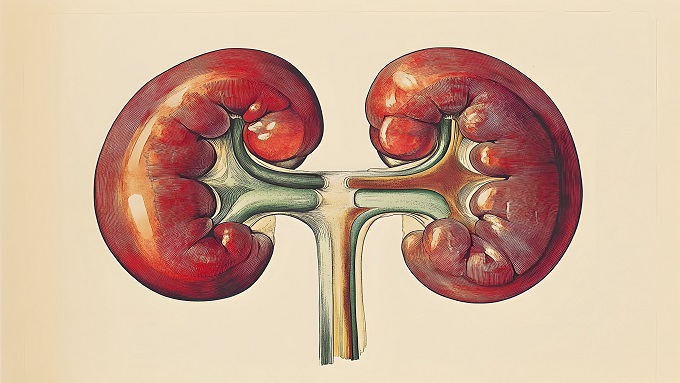FACTORS RELATED TO THE INCIDENCE OF HIV/AIDS AMONG SHEMALE IN SURABAYA, INDONESIA
Downloads
Background: Acquired Immunodeficiency Syndrome (AIDS) is one of the diseases that cause death in the world caused by the Human Immunodeficiency Virus (HIV). Since it was first discovered in 1987 until December 2017, the number of person with AIDS was 102,667, and the number of person with HIV infections was 280,623. HIV/AIDS cases in East Java occupy the second highest position in Indonesia. Surabaya is the first city in East Java with 934 HIV cases in 2017. Shemale is one of the groups at risk of getting HIV/AIDS with prevalence was 24.82%. Objective: The purpose of this study was to analyze the factors that influence shemale related to the incidence of HIV/AIDS in Surabaya. Materials and Methods: This study was an analytic research using a cross sectional approach. The subject was 80 shemale respondents. Data were collected using questionnaires then analyzed using Chi-square test, with α=0.05. Results: The highest age group was 42-46 years (22.5%), the last level of education was dominated by high school (41.3%), and the most types of work were private employees (47.4%). There was no correlation between predisposing factors in the form of knowledge about HIV/AIDS and respondent's HIV status (p=0.729), there was no correlation between enabling factors in the form of condoms and respondent's HIV status (p=0.624), there was no correlation between the reinforcing factor in the form of family support with the HIV status of the respondent (p=0.674) and there was no correlation between preventive behavior and the HIV status of the respondent (p=0.540). Conclusion: The need for support between shemales for the dangers of HIV/AIDS and shemale should be more aware of their own health and environment with their social patterns.
Arku, J., 2012. The "AIETA Model" of communication as propounded by Everett Rogers in his book "Diffusion of Innovation". Downloaded 18 August 2019 from http://jassyarku.blogspot.com/ 2012/09/the-aieta-model-of-communication-as.html
Awad, L., Elim, C., Anita, D., Ekawardani, N., 2015. Perbedaan tingkat pengetahuan dan sikap tentang HIV/AIDS pada waria pekerja seks komersial dan waria non-pekerja seks komersial di Kota Manado [Difference of knowledge and attitude on HIV/AIDS among female commercial sex workers and non-commercial sex workers in Manado]. Journal e-Clinic (eCl). 3(1): 463-9.
Eda, N., Widjanarko, B., Widagdo, L., 2012. Niat penggunaan kondom pada komunitas waria di Kota Ternate [Intention to use condom among shemale community in Ternate]. Jurnal Promosi Kesehatan Indonesia. 7(2): 174-10.
Firmansyah, F., Asrifuddin, A., Kalesaran, A., 2018. Gambaran epidemiologi dan pengetahuan HIV/AIDS pada waria di Kota Manado tahun 2018 [Profile of HIV/AIDS epidemiology and knowledge among shemale in Manado in 2018]. Jurnal KESMAS. 7(4).
Jatmiko, A., Martodihardjo, S., Dewi, D., 2010. Peranan kondom pada penderita HIV [Role of condom in HIV patients]. Berkala Ilmu Kesehatan Kulit dan Kelamin. 22(1): 45-4.
Marubenny, S., Aisah, S., Mifbakhuddin, 2013. Perbedaan respon sosial penderita HIV/AIDS yang mendapat dukungan keluarga dan tidak mendapat dukungan keluarga di Balai Kesehehatan Paru Masyarakat (BPKM) Semarang [Difference in social response among HIV/AIDS patients receiving and not-receiving family support at BPKM Semarang]. Jurnal Keperawatan Komunitas, vol 1, pp 43-51.
Ministry of Health, Republic of Indonesia, 2007. Laporan Survei Terpadu Biologi dan Perilaku, analisis kecenderungan perilaku berisiko terhadap HIV di Indonesia [Integrated Survey Report on Biology and Behavior, analysis of predisposing risky behavior to HIV in Indonesia]. Jakarta: Ministry of Health, Republic of Indonesia 2009.
Ministry of Health, Republic of Indonesia, 2007. Pedoman nasional terapi antiretroviral: Panduan tatalaksana klinis infeksi HIV pada orang dewasa dan remaja [National guidelines for antiretroviral therapy: Guidelines of clinical management for HIV infection in adults and young adults]. Jakarta.
Ministry of Health, Republic of Indonesia, 2009. Surveilans terpadu biologis perilaku pada kelompok beresiko tinggi di Indonesia, rangkuman surveilans waria [Integrated biological surveillance in high risk group in Indonesia, a summary of surveillance to shemale]. Kerjasama Depkes, BPS, KPA dan LSM Peduli AIDS. Jakarta.
Ministry of Health, Republic of Indonesia, 2015, Survei Terpadu Biologis dan Perilaku [Integrated Survey Report on Biology and Behavior]. Jakarta: Directorate General of Disease Control and Environmental Health. UNAIDS, 2016. Global AIDS Up Date 2016. [e-book]. Downloaded 31 May 2016 from http://www.unaids.org/sites/default/files/ media_asset/global-AIDS-update- 2016_en.pdf.
Ministry of Health, Republic of Indonesia, 2016. Profil kesehatan Indonesia tahun 2015 [Health profile of Indonesia in 2015]. Jakarta.
Prabawanti, C., Bollen, L., Palupy, R., Morineau, G., et al., 2011. HIV, sexually transmitted infections, and sexual risk behavior among transgenders in Indonesia. AIDS Behav. 15(3): 663-73.,
Rahmayani, V., Hanif, A., Sastri, S., 2014. Hubungan pengetahuan dan sikap dengan tindakan pengetahuan penularan HIV- AIDS pada waria di Kota Padang Tahun 2013 [Correlation between knowledge and attitude with action on HIV/AIDS transmission among shemale in Padang, 2013]. Jurnal Kesehatan Andalan. 3(2).
Saraswati, L.D., 2017. Eksplorasi kepribadian waria dalam perspektif psikologi individual [Exploration of shemale personality in individual psychological perspective]. E-Journal Bimbingan dan Konseling Edisi 1 Tahun ke-6, 80-98.
Social Welfare Data and Information Center, 2010. Kementerian Sosial dalam angka pembangunan kesejahteraan sosial [Ministry of Social Affairs in developing social welfare. A profile]. Jakarta.
WHO, 2015. Global Summary of The AIDS Epidemic 2015.
Yustinus, Semiun, O.F.M., 2013. Teori-teori kepribadian psikoanalitik kontemporer-1 [Contemporary theories on psychoanalytic personality I]. Yogyakarta: Penerbit Kanisius.
1. The journal allows the author(s) to hold the copyright of the article without restrictions.
2. The journal allows the author(s) to retain publishing rights without restrictions.
3. The legal formal aspect of journal publication accessibility refers to Creative Commons Attribution 4.0 International License (CC-BY).
































